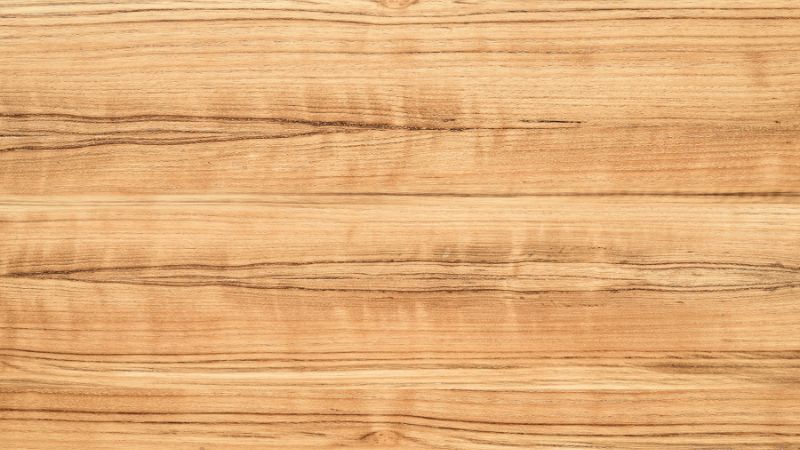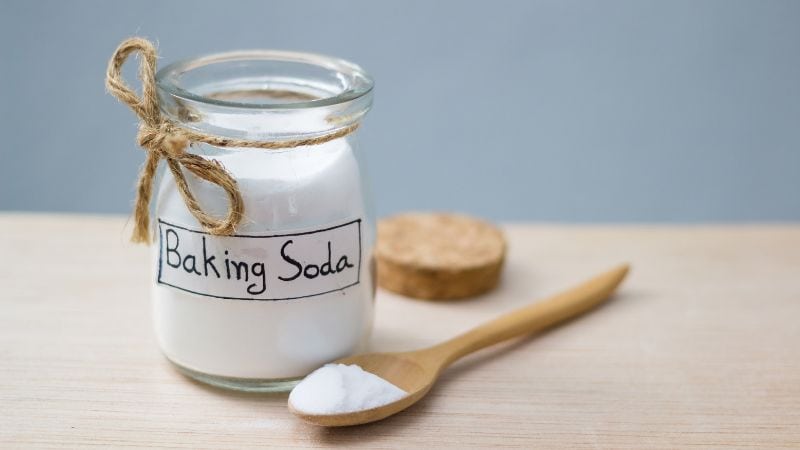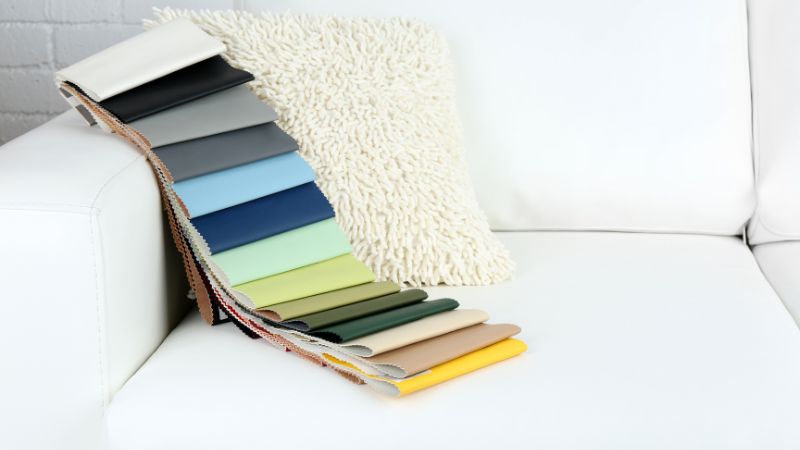
That wooden dresser in your bedroom has been with you for years. It’s sturdy, it’s familiar, and it fits perfectly in the space. But over time, it has absorbed a stubborn smoke smell. Now, every time you open a drawer, the odor reminds you it’s there.
Worse still, that smoky smell can be overwhelming. It gets into your clothes, your room, and it feels like it will never go away.
Though getting smoke smell out of wood furniture isn’t always a one-step job, it is very possible. With a little patience and some common household items, you can make that furniture smell fresh and clean again. This guide will walk you through the whole process, step-by-step.
Why Your Wood Furniture Stinks
To beat the smell, it helps to know what you’re fighting. Smoke isn’t just a smell that floats in the air. It’s made of tiny, oily particles. When smoke fills a room, these particles don’t just land on the wood—they soak deep into it.
Wood isn’t solid like plastic. It’s a porous material, which means it has millions of tiny holes, like a sponge. The oily smoke particles get trapped in these holes. Every time the air gets warm or humid, those oils release a little bit of that smell all over again.

That’s why just wiping the surface isn’t enough. You need to clean off the oily residue and pull the trapped smell out from deep inside the wood.
Step 1: Get Ready
Before you start cleaning, you need to get the furniture ready. This sets you up for success.
- Take it Outside: This is the most important step. If you can, move the furniture to a porch or your backyard. The fresh air will already start to help, and you won’t spread the smell around your house.
- Safety First: Put on a pair of rubber gloves and, if you have one, a dust mask. Soot and smoke residue are not things you want to breathe in or get on your skin.
- Take it Apart: Remove all the drawers and shelves. If it has doors, take them off their hinges, too. This lets you clean every single surface, especially the hidden insides where smells love to hide.
- Vacuum Everything: Use the soft brush attachment on your vacuum cleaner. Gently vacuum every inch of the furniture—the front, back, sides, top, and bottom. Pay special attention to carvings, corners, and cracks. This removes loose soot so you don’t rub it deeper into the wood when you clean.
Step 2: Give it a Deep Clean
Now it’s time to tackle the oily, sticky residue left on the surface. We’ll start with a gentle method and then move to a stronger one if you need it.
The Vinegar Wipe-Down (For a Mild Smell)
Mix equal parts white vinegar and water in a spray bottle. Don’t spray the furniture directly! Instead, spray a soft microfiber cloth until it is just damp. Wipe down the entire piece of furniture, following the direction of the wood grain. Go over it again with a dry cloth to soak up any extra moisture. Vinegar is great because it naturally neutralizes odors instead of just covering them up.
The Soap Scrub (For a Stubborn Smell)
If the vinegar isn’t enough, it’s time for soap. A degreasing dish soap works perfectly. Add a small squirt to a bucket of warm water. Dip your cloth in the soapy water, then wring it out until it’s barely dripping. Scrub the furniture thoroughly. Take a second cloth, rinse it in clean water, wring it out well, and wipe the furniture down to remove any soapy film. Dry it immediately with a clean, dry towel.
Remember: Always test any cleaner on a small, hidden spot first (like the back or the inside of a leg) to make sure it doesn’t damage the finish.
Step 3: Pull Out the Smell from Deep Inside
You’ve cleaned the surface. Now for the smell trapped deep in the wood. For this, we use natural odor absorbers.
Baking Soda

Baking soda is a champion at soaking up smells. Sprinkle a generous amount of plain baking soda directly onto the wood surfaces, inside the empty drawer cavities, and on the underside of the furniture. Let it sit for at least 24 hours; 48 hours is even better. The baking soda will slowly pull the odor particles out of the wood. After it has sat, use your vacuum’s brush attachment to remove all the powder.
Coffee Grounds
If you have fresh, dry coffee grounds, they can also help. Place small bowls or cups of the grounds inside the drawers and the main cabinet of the furniture. Close the drawers and doors and let it sit for a few days. The coffee grounds will help absorb the smoky odor.
Step 4: The Fresh Air Finale
After you’ve vacuumed up the baking soda, your furniture should already smell much better. Now, let nature do its work. Leave the furniture outside for as long as you can—ideally for a few sunny days.
The sun and fresh air are powerful natural deodorizers. The breeze helps carry the last of the odor molecules away. Just make sure that if it looks like it’s going to rain, move your furniture under a cover to prevent it from getting wet.
Step 5: When the Smell Just Won’t Quit
Sometimes, after all that work, a faint smell remains. Don’t give up! You still have a couple of powerful options.
Seal it In
If the smell is only coming from the raw, unfinished wood inside the drawers or on the back, you can seal it in forever. Use an odor-sealing primer. These are special oil- or shellac-based paints that create a barrier the smell can’t get through. Simply paint a coat onto the smelly, unfinished wood. Once it’s dry, the smell is locked away for good. This is a great last resort before you decide to get rid of a piece.
Call the Professionals
For furniture that has been through a serious fire, the smell might be too strong for DIY methods. In this case, it’s best to call a restoration company. They have powerful tools called ozone generators. These machines release a gas that breaks down the smoke odor molecules at a chemical level. It’s very effective, but it’s a job for the pros, as the gas isn’t safe to breathe.
Step 6: What NOT to Do
Knowing what to avoid is just as important as knowing what to do.
- Don’t Drown the Wood: Using too much water can warp the wood and ruin its finish. Always use a well-wrung cloth.
- Don’t Mask the Smell: Do not use perfumed sprays or scented polish on the furniture. These don’t remove the smell; they just mix with it, creating an even weirder, mustier odor.
- Don’t Bring it In Too Soon: Never bring the furniture back into your house until you are 100% sure the smell is gone. If you bring it in too early, the smell can spread to your curtains, carpets, and other furniture.
FAQs
Will the smoke smell ever completely go away?
In almost all cases, yes. With patience and the right steps, you can get rid of it completely. Only in cases of very severe, long-term smoke damage might you need to seal the wood or get professional help.
Can I use Febreze or a similar spray?
It’s not a good idea. These sprays leave a residue and only cover up the smell for a short time. They can actually make it harder to remove the real smoke odor later.
How long does the whole process take?
It depends on how bad the smell is. A light smell might be gone in a day or two. A heavy smell could take a week or more of repeating the baking soda and fresh air steps. Be patient—it’s worth it.
Conclusion
Getting the smoke smell out of wood furniture is a battle you can win. Start by getting it ready and giving it a good clean. Then, use baking soda to pull out the deep smells and let the fresh air finish the job.
Remember to be patient with your furniture and with yourself. Take your time with each step. Before you know it, that beautiful dresser or table won’t just look great—it will smell great, too, and be a fresh part of your home for years to come.



